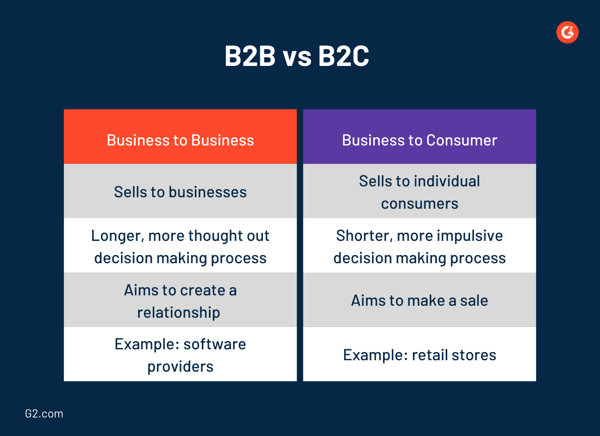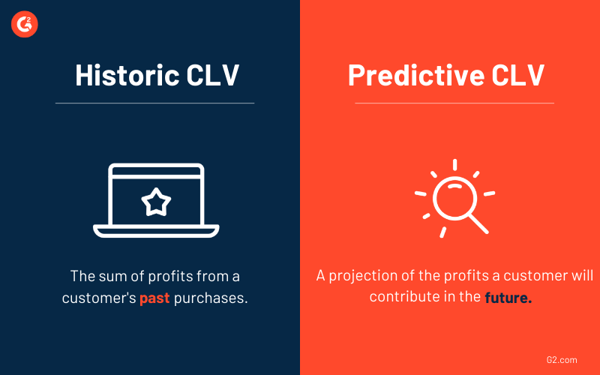July 4, 2025
 by Mary Clare Novak / July 4, 2025
by Mary Clare Novak / July 4, 2025

Wrangling tough clients. Chasing quota under pressure. Learning the ins and outs of your company’s sales stack. And let’s not forget decoding the never-ending firehose of sales terms that fly around in team meetings, Slack messages, and CRM dashboards.
Sales isn’t just about being persuasive, it’s about speaking the same language as your prospects, your team, and your data.
Whether you're new to the field or just tired of nodding along to acronyms you secretly don’t recognize, mastering sales terminology isn’t optional, it’s essential. Imagine you're using sales performance management software and you don't know what the terms stands for?
This guide breaks down 80+ core sales terms every rep, marketer, and customer-facing pro should know. Whether you’re brushing up or starting fresh, use this glossary to sharpen your communication, align with your team, and close smarter.
Whether you’re an aspiring rep, a marketer working with your company’s sales department, or an experienced seller looking to brush up on your vocabulary, we’ve put together 81 fundamental sales terms to act as a refresher or a starting guide.
“Always Be Closing” is more than just a famous movie quote, it’s a long-standing mantra in sales philosophy. The idea: every action a sales rep takes should drive the prospect closer to a closed deal. While modern sales is more consultative than transactional, the ABC mindset still applies in high-velocity selling, especially in B2B environments.
Tip: Don’t take ABC too literally. Instead of pitching every second, focus on moving the deal forward, whether that’s scheduling a demo, sending a follow-up, or aligning stakeholders.
An account represents an organization (or sometimes an individual) you’re doing business with. In CRM systems, accounts contain key records like contact info, purchase history, touchpoints, and preferences. Once a lead converts into a customer, they become an account, complete with opportunities, support cases, and upsell potential.
CRM connection: Most B2B CRMs treat the account as the primary record type, with contacts and deals linked underneath.
Account-based selling is a targeted go-to-market strategy where sales, marketing, and customer success teams work in lockstep to engage high-value accounts. Unlike traditional lead-based models, ABS flips the funnel, focusing first on who to sell to, then crafting personalized outreach across channels.
Best for: Enterprise sales, complex buying committees, long deal cycles
Pro Insight: Use G2 Buyer Intent data to identify when your top accounts are actively researching competitors or product categories and tailor your outreach accordingly.
An Account Executive is a quota-carrying sales rep responsible for managing relationships with prospects and existing clients. Their main focus? Closing deals. But the best AEs also act as trusted advisors, identifying pain points, aligning solutions, and collaborating with internal teams to deliver value.
Skills needed: Objection handling, storytelling, negotiation, CRM hygiene, and deep product knowledge
ADRs focus on early-stage relationship building with key accounts. Unlike SDRs or BDRs who may work off high-volume lead lists, ADRs typically engage named accounts through research-driven outreach, social selling, and personalized campaigns.
Also known as: Strategic SDR, enterprise BDR
Goal: Set qualified meetings for senior sellers by understanding account structure, buying triggers, and decision-making dynamics
Annual Contract Value is the average annual revenue from a customer contract—especially useful in SaaS and subscription-based sales. It helps compare customer profitability over time and is often used alongside Customer Lifetime Value (CLV) or CAC (Customer Acquisition Cost).
Pro Use: Use ACV to segment high-value accounts and prioritize renewals or expansions.
Example: If you have a customer who signed a 4 year contract for $100,000, your ACV would be $25,000.
A BDR focuses on outbound leads, identifying new leads, starting conversations, and setting qualified meetings for the sales team. BDRs don't typically close deals themselves; instead, they create opportunities for account executives by engaging potential buyers early in the sales process.
Tip: Great BDRs combine persistence, curiosity, and personalization in their outreach.
B2B refers to businesses that sell products or services to other businesses. Unlike B2C (business-to-consumer) sales, B2B transactions often involve longer cycles, higher price points, and multiple decision-makers. B2B sales typically require deeper consultation and relationship-building.
B2C describes companies that sell directly to individual consumers. These sales cycles tend to be shorter and more emotionally driven, often relying on convenience, price, or brand recognition. E-commerce and retail companies are classic examples of B2C businesses.

A bad lead is a contact that’s highly unlikely to become a customer, whether due to lack of budget, authority, need, timing, or simply poor fit. Bad leads clog pipelines, drain rep time, and lower conversion rates, so identifying them early is crucial to maintaining sales efficiency.
BANT is an acronym used when sales representatives are qualifying leads.
B = Budget: determines if the business has the budget to purchase the solution
A = Authority: identifies key decision-makers in the business
N = Need: verifies that the business has a real need for the solution
T = Time: checks if the business is likely to make a timely purchase
Sales representatives use BANT to help them decide whether or not a prospect is qualified, meaning they are worth pursuing.
Bottom of the funnel refers to the final stage in the buyer’s journey, where a lead is close to making a purchase decision. At this point, prospects want specific details like pricing, ROI, or implementation timelines. This is where strong demos, testimonials, and clear calls to action help close the deal.
Buyer behavior refers to how individuals or businesses make purchasing decisions. It includes emotional triggers, research patterns, buying timelines, and deal influencers. Sales teams use insights into buyer behavior to personalize messaging, anticipate objections, and improve conversion rates.
A buyer persona is a semi-fictional profile representing your ideal customer. It’s built from real data, research, and patterns in buyer behavior. Personas help sales and marketing teams align messaging to specific roles, industries, or challenges in a targeted and efficient way.
Example: David is a 28-year-old architect living in Michigan who is looking for a software that will help him keep customers, accounts, and projects organized and up to date.
Buying criteria is any information a customer might request so they can make a well-informed buying decision. A customer might ask about particular benefits, how your business is different/better than the competition, and how much the solution costs.
The buying process is the stages that a buyer encounters on their journey to find a solution and buy a product. The buying process can be broken down into more specific stages, but they are all grouped into three main steps:
A buying signal is a verbal or nonverbal cues that show a customer is ready to make a purchase, such as signing up for a free trial or asking about contract specifics. Picking up on these signals can help sales reps better focus their attention on customers that are giving off more buying signals.
Buying intent is the likelihood of a person making a purchase, which is realized through monitoring online buying journeys. Businesses can use tools like G2 Buyer Intent to learn the companies researching their product and find the right people to contact.
Churn rate is the percentage of customers who stop doing business with a company over a set period. It’s calculated by dividing the number of customers lost by the number you had at the start of the period. Lower churn means better retention, and better long-term revenue.
Example: If you started your first quarter with 100 customers, and lost 8 over the course of that quarter, your churn rate would be 8%.
Closed opportunities are deals that have reached an outcome, either closed-won (you got the sale) or closed-lost (you didn’t). Some teams use “closed opportunities” to refer only to won deals, so it’s important to define the term internally.
Closed-won means a deal has been successfully completed and the customer has agreed to buy. It’s the final goal in the sales pipeline, and often the starting point for customer success or onboarding teams.
Closed-lost refers to any opportunity that didn’t result in a sale. The rep may have been outpriced, outcompeted, or simply lost momentum. Tracking closed-lost reasons helps sales teams improve targeting and deal strategies.
Closing ratio compares how many deals a rep or team closes against the total number of engaged prospects. It’s a performance indicator that helps assess selling effectiveness and forecast future revenue.
Example: If you gave 50 value demonstrations and won 5 deals, your closing ratio would be 50:5, or 10%.
Cold calling is the practice of reaching out to prospects who haven’t interacted with your company before, typically over the phone. The goal is to introduce your solution, ask discovery questions, and spark interest in a follow-up conversation.
Commission is additional compensation that is earned based on performance. The money typically comes from a portion of the sales revenue. Any sales related position is a common commission based job, but the percentage will be different from business to business.
Example: If a salesperson made a $100,000 sale and they get 15% commission, they would earn an additional $15,000 to their salary from the sale.
A conversion happens when a person completes a desired action, such as signing up for a demo, downloading content, or making a purchase. In sales, conversions are key indicators of buyer intent and marketing effectiveness.
A consumer is the end user of a product or service. They’re not always the buyer, for example, if a parent buys software for their child, the child is the consumer. Knowing the difference helps sales and marketing teams tailor messaging more effectively.
A conversion path is the sequence of steps a person takes to become a lead or customer. It often includes viewing content, clicking calls-to-action, filling out forms, and engaging with sales outreach. Optimizing this path improves lead generation.
Conversion rate is the percentage of people who take a specific action, like submitting a form or signing a contract, compared to the total audience exposed to that action. It’s a key performance metric for sales and marketing.
Example: If you had 100 site visitors and 15 of them resulted in a conversion, your conversion rate would be 15%.
Cross-selling is when a sales rep finds more than one solution that will help a particular customer. This can either happen at the time of the first purchase or later on once the sales rep has created a relationship with the customer.
Customer acquisition cost is the cost associated with getting someone to purchase your solution. CAC is a good indicator of profitability - the amount of money extracted from customers is compared to the cost of acquiring that customer.
Example: If you make a profit of $1,000 from a customer, but acquiring them cost $1,500, you might want to reprioritize.
Customer lifetime value is a prediction of the profit that will result from a relationship with a customer. CLV can be affected by the length of the customer life cycle, retention rate, churn rate, and average profits by customer. There are two types of CLV:

Customer relationship management software acts as a database full of customer information. There are three types of CRM tools:
Contact information, past interactions, and previous purchases can all be found in a CRM tool. CRM is designed to help sales reps create relationships with customers and give customers a personalized experience, resulting in more sales.
Customer success is a business practice, or department, that ensures customers achieve their desired outcome when using a business solution. This creates a mutually beneficial situation for the business and the customer - the customer resolves their pain point and the business increases the likelihood of earning that customer’s loyalty.
The decision maker is the person (or people) with the authority to approve a purchase. Identifying this individual early is critical, especially in B2B sales, where multiple stakeholders may be involved in the buying process.
Demand generation is a marketing process that builds awareness and interest in a company’s solution. Demand generation activities include lead nurturing programs, content marketing, and search engine optimization.
A discovery call is the first conversation between a sales rep and a new lead. It’s used to understand the prospect’s needs, assess fit, and qualify the opportunity. Reps often use frameworks like BANT or MEDDIC during these calls.
A field sales rep works primarily outside of the office, meeting with prospects in person. They’re common in industries where in-depth demos or site visits are important. Field reps typically manage longer, more complex sales cycles.
Forecasting is the act of estimating future sales so companies can make better business decisions and predict performance. Forecasts can be based on past sales data, industry comparisons, or economic trends.
A gatekeeper is a person that either enables or prevents information from reaching the intended person at a company. An example of this would be a personal assistant giving a message to a decision maker, the intended recipient.
An inside sales handles sales remotely, typically over phone, email, and video calls, rather than in person. They manage a high volume of leads and often close smaller to mid-sized deals. Inside sales is faster-paced and more tech-driven than field sales.
KPIs are measurable goals that track sales performance. Common KPIs include number of calls made, demos booked, deals closed, and pipeline generated. These metrics help teams assess what’s working and where to improve.
A lead is a person or company that has expressed interest in another company’s solution that might eventually become a customer. Businesses can gather leads through marketing, trade shows, or networking.
Lead generation is the process of attracting people and converting them into prospects through activities such as website optimization, social media, and email marketing.
Lead qualification is the process of evaluating whether a lead is worth pursuing. Reps look at factors like budget, decision-making authority, and urgency to determine if a lead is likely to convert. Frameworks like BANT and MEDDIC guide this step.
Lead scoring is a method that ranks prospects according to the value they can add to the business. The purpose of lead scoring is to help sales reps understand how they should prioritize their time and energy to make the most profit.
Mark-up is the amount added to the cost of a product or service to determine its selling price. It ensures the business makes a profit after covering expenses. Mark-up is commonly used in pricing strategies across industries.
A marketing qualified lead is a lead that has shown enough interest or engagement to be passed from marketing to sales. They may have downloaded a whitepaper, signed up for a webinar, or visited key product pages. MQLs are warmer than general leads but still need sales qualification.
The middle of the funnel is the part of the buying process where a lead conducts research to find a solution to the problem at hand. At this point, a lead will likely be looking at the features specific to your solution and customer reviews.
MRR is the predictable monthly income a company earns from active subscriptions or contracts. It’s a key metric for SaaS and subscription businesses and helps with forecasting, planning, and evaluating long-term growth.
Example: Ten customers paying $500/month equals $5,000 MRR.
A net promoter score is a customer satisfaction metric that measures how likely a customer is to recommend your solution. This data is usually collected using a survey. Based on the rating they give, a customer is either considered a detractor (wouldn’t buy the solution again or recommend it), passive (satisfied but wouldn’t necessarily promote the solution), or a promoter (a repeat buyer that acts as a brand ambassador). Some industries use a scale of 0-10, while others use 0-100.
Objections refer to any questions or concerns from a prospect after a sales rep has performed a value demonstration. Common objections have to do with budget, authority, need, and timing (BANT). Handling these objections is a step in the sales process and a necessary skill of any sales rep.
Onboarding is the process of introducing new customers to your product or service after a deal closes. This includes setup, training, and support to ensure a smooth start. Effective onboarding reduces churn and increases customer satisfaction.
An opportunity is a contact or prospect that has been qualified and is considered worthy of pursuing. It is important to note that the definition of an opportunity can vary across businesses. The general idea is that they show potential for becoming a customer.
A pain point is a customer’s need. Identifying the pain points of a particular customer and showing how their solution can relieve them is necessary for sales reps trying to close a deal. Common customer pain points include spending too much on a solution, wasting time when buying, experiencing a bad selling process, and not getting enough post-sale support.
Positioning statements are comments or questions a sales rep uses to engage the prospect. The purpose of a positioning statement is to start a conversation with the consumer and learn about their pain points.
Tip: It’s often the question or comment that nudges the deal closer to a close.
Profit margin measures how much money a company actually makes from a sale after subtracting costs. It’s typically expressed as a percentage and calculated by dividing net profit by revenue. Higher margins indicate better financial efficiency.
Example: If your gross profit was $500, and your revenue was $2000, your profit margin would be .25, or 25%.
Prospecting is the process of looking for potential buyers. This is the first step in the sales process, and the goal is to move these prospects down the sales funnel and convert them into loyal customers.
Qualified leads are leads that have been deemed more likely to become customers based on certain criteria they provided or you discovered. There are two types of leads.
A quota is the sales goal assigned to a rep or team over a set time period, such as monthly or quarterly. It could be based on revenue, number of deals closed, or units sold. Hitting quota is the baseline for measuring sales performance.
An SDR focuses on inbound leads, those who’ve already shown interest through marketing channels. SDRs qualify these leads and set appointments for AEs to close. Their role is critical to moving warm prospects through the early stages of the funnel.
SDR vs. BDR: SDRs handle inbound; BDRs typically handle outbound.
Sales enablement is the practice of equipping sales teams with the tools, training, content, and processes they need to sell more effectively. It bridges gaps between marketing and sales and improves rep performance through better resources and alignment.
Common tools include: playbooks, case studies, competitive battlecards, and onboarding tracks.
The sales funnel is a visual model representing the buyer’s journey from first touch to purchase. It typically includes six stages: awareness, interest, consideration, intent, evaluation, and purchase. Each stage helps sales teams tailor engagement based on buyer readiness.
Sales methodology refers to the guiding principles or philosophy behind how reps sell. It’s the “why and how” behind each step of the process. Common methodologies include MEDDIC, Challenger, and SPIN selling. Methodology aligns your team’s approach to solving customer problems.
A sales process refers to the concrete steps and actions a sales rep goes through to make a sale. These are repeatable steps to convert a prospect into a loyal customer.
The sales process and sales methodology are often confused, so let’s break it down visually.

A sales pipeline is a structured view of each deal's position in the sales process. It tracks stages like discovery, demo, proposal, and negotiation. Reps use the pipeline to manage workloads and forecast revenue based on deal progression.
Sales pipeline coverage is the ratio between the value of your pipeline and your quota for a specific period. For example, if your quota is $100,000 and you have $300,000 in pipeline, your coverage is 3x. This metric helps assess whether there’s enough in play to hit targets.
An SLA is an internal agreement, often between sales and marketing, that defines responsibilities, hand-off points, and lead quality expectations. It ensures both teams stay aligned and accountable in driving revenue.
Smarketing refers to aligned sales and marketing efforts. The word sounds silly, but the principle behind it is crucial for the success of a business. Marketing and sales need to support each other, and that requires a lot of communication and collaboration.
Social selling is the act of using social media to interact with prospects. Oftentimes, this includes providing answers to simple questions that will help the prospect better understand their pain points and potential solutions.
A sound bite is a series of words or phrases that a sales rep has prepared to help them quickly and effectively communicate with a prospect.
The top of the funnel refers to the first stage in the buyer’s journey. At this point, buyers are still trying to understand their problems. On the selling side, it’s the job of marketers to provide content that will help educate the buyer about their problem and point out possible solutions.
Upselling is the act of encouraging a customer to upgrade to a more expensive or advanced version of a product. It typically happens after the initial sale and aims to increase value for both the customer and the business. Done right, it feels helpful, not pushy.
A value proposition is the presentation of the benefit(s) that a solution provides to its customers. A good value proposition (that is presented during the value demonstration stage in the sales process) will cater to the individual needs of that particular customer.
A weighted pipeline assigns a probability to each deal stage, helping teams forecast revenue more accurately. For example, a deal in “proposal sent” might be assigned a 50% probability of closing. The further along in the deal, the higher the weight.
A significant part of understanding the basics of sales is grasping customer relationship management (CRM) software. CRM is the primary tool used by businesses to track prospect interactions and deal progress. It aids in drawing conclusions about the most effective methods to attract, convert, and retain customers.
You’ll find that a lot of the CRM terms listed below refer to the management of a related sales term mentioned above, especially when referring to a stage in the buying process or sales funnel. This is because CRM is a system for sales reps, marketers, and customer service agents to find ways to better manage the customers in each one of these stages or their overall sales process.
Ad hoc reporting refers to the business intelligence process that creates reports with real-time data sets as needed by users. These reports are put together to answer a specific question in response to a particular event. Essentially ad hoc reporting shows the after effects of a certain business action.
Business intelligence refers to a wide range of tools used to transform data into actions for companies to take in regards to their overall business goals, strategies, and tactics. This process uses data analytics to examine information and present relevant findings in the form of reports, dashboards, or other types of data visualization.
A case refers to an issue that a customer has presented to a sales rep that needs to be addressed. These cases can be opened for a variety of reasons, such as needing support on using a product or making changes to information in a customer’s profile.
A cloud based CRM is CRM software that is hosted on the cloud. This means that all of the information stored on a CRM can be accessed by authenticated users on the internet, as opposed to a physical piece of hardware.
CPQ software, also known as configure price quote software, helps businesses automate the process of quoting and sending proposals to customers. This cycle starts when a customer expresses their needs to a business and ends when a quote is sent over. The purpose of using CPQ software is to accelerate the process, produce an accurate quote, and improve customer relations.
Contract management refers to the process of governing the life cycles of contracts with customers, vendors, partners, and employees. Contract management begins when a contract is drawn up, and ends when it expires. However, within that time frame, the contract might be renewed or the terms may change, requiring management.
CRM analytics is the analysis of data held within your business’ CRM tool. Insights gathered from the results are specific to customers and your sales pipeline, such as buying trends and areas of improvement within the sales process.
An escalation occurs when a customer issue is directed to a higher-up department so it can be resolved more effectively. It’s possible that an issue will be presented to a department that doesn’t have the appropriate knowledge, resources, or power to resolve it. This is where escalations happen.
Lead management refers to the process of generating, tracking, and prioritizing potential customers. Once these leads are generated from other marketing or sales actions and qualified as worthy of pursuing, they are arranged and approached based on their likelihood of making a purchase. After that initial contact is made, they are nurtured and hopefully converted into customers. This whole process is referred to as lead management.
On-premise CRM is software hosted on the company’s own server. This version of CRM is often accompanied with access to the source code, so it can be customized to fit the needs of that particular company. It also gives businesses complete control over the data being held within the CRM.
Opportunity management refers to the administration of deals within a business’ sales pipeline. The purpose of this added layer of attention to opportunities is to enable sales reps to easily and conveniently close as many deals as possible.
Pipeline management works to streamline every stage of the sales process and customer journey. It refers to the process of moving leads further down the pipeline, with the ultimate goal of converting them into customers.
A sales dashboard is a method of data visualization that portrays your most important sales metrics in a way that is easy to understand. Sales dashboards can be created for a variety of sales department matters, such as performance, conversions, and activities completed.
Sales performance management refers to the organization of sales processes to improve efficiency and effectiveness. Areas of sales performance management include compensation plans, quota setting, and territory management.
Have more questions? Find the answers here.
BANT in sales stands for Budget, Authority, Need, and Timeline. Sales teams use BANT to qualify leads by confirming if a prospect has the budget to buy, authority to decide, a real need for the product, and a defined timeline for purchase. It helps prioritize high-quality leads efficiently.
The main difference between a lead and an opportunity is that a lead is an unqualified prospect showing initial interest, while an opportunity is a qualified lead with a defined sales potential. Leads require validation, whereas opportunities have confirmed needs, budget, and buying intent.
CAC stands for Customer Acquisition Cost. Calculate CAC by dividing total sales and marketing expenses by the number of new customers acquired in a specific period. For example, if you spend $10,000 and acquire 100 customers, your CAC is $100 per customer.
The main difference between MQL and SQL is that a Marketing Qualified Lead (MQL) has shown interest through marketing engagement, while a Sales Qualified Lead (SQL) is ready for direct sales contact. MQLs require further nurturing; SQLs meet criteria to enter the sales pipeline.
A sales pipeline includes key stages such as lead generation, qualification, meeting or demo, proposal, negotiation, and closing. Each stage represents a step in the buyer’s journey and helps sales teams track progress, forecast revenue, and manage opportunities more effectively.
Customer Lifetime Value (CLV) is the total revenue a business expects to earn from a customer over the entire relationship. CLV helps companies measure long-term profitability per customer and guides decisions on marketing spend, customer retention, and acquisition strategy.
The most common sales terms include B2B, B2C, lead, prospect, pipeline, quota, conversion rate, churn, CAC (Customer Acquisition Cost), CLV (Customer Lifetime Value), MQL (Marketing Qualified Lead), SQL (Sales Qualified Lead), and ROI (Return on Investment). These terms define key concepts in sales operations.
Not knowing the proper definition for sales terms can cause confusion, miscommunication, and misinformation being shared. Getting a firm grasp on these terms is crucial to becoming an effective and well-informed sales team member.
Looking to social proof your software sales? G2’s Seller Solution is the perfect opportunity to help build trust and credibility amongst even your most fickle prospects. Learn more today!
This article was originally published in 2021. It has been updated with new information.
Mary Clare Novak is a former Content Marketing Specialist at G2 based in Burlington, Vermont, where she is explored topics related to sales and customer relationship management. In her free time, you can find her doing a crossword puzzle, listening to cover bands, or eating fish tacos. (she/her/hers)
Selling is hard. Selling to B2B customers is a Herculean task.
 by Kashyap Trivedi
by Kashyap Trivedi
Sales teams use a dozen tools to make sales pitches more personal — CRMs, proposal software,...
 by Rory Sadler
by Rory Sadler
A lot of factors contribute to whether or not a sales rep hits their quota.
 by Mary Clare Novak
by Mary Clare Novak
Selling is hard. Selling to B2B customers is a Herculean task.
 by Kashyap Trivedi
by Kashyap Trivedi
A lot of factors contribute to whether or not a sales rep hits their quota.
 by Mary Clare Novak
by Mary Clare Novak


